They Died With Their Boots On (1941)
“You don’t know Custer. You get him fighting mad, and there isn’t anything he won’t do!”
|
Synopsis: |
|
Genres, Themes, Actors, and Directors:
Review:
Quinn is suitably noble-looking as Crazy Horse, but is given minimal screen-time and only speaks a few broken lines, such as the following: “Crazy Horse, war chief Sioux, speak with Long Hair, war chief Great White Father.” Kennedy’s sneering role as a corrupt profiteer is equally thankless: … and Charley Grapewin as “California Joe” merely serves as comedic relief: Meanwhile, this was Flynn and de Havilland’s eighth and final romantic pairing together — after co-starring in Captain Blood (1935), The Charge of the Light Brigade (1936), The Adventures of Robin Hood (1938), Four’s a Crowd (1938) [not listed in GFTFF], Dodge City (1939), The Private Lives of Elizabeth and Essex (1939), and Santa Fe Trail (1940) — and their chemistry is as sure as ever: What’s most impressive about this film, however, are the battle sequences, which were so harrowing they caused three real-life deaths and at least 80 injuries. Note: For a Native American perspective on the Battle of Little Big Horn, click here to listen to a revealing interview with Sitting Bull’s great-grandson. Notable Performances, Qualities, and Moments: Must See? Links: |
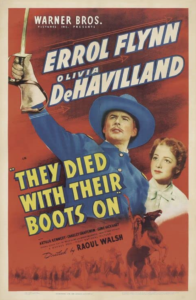
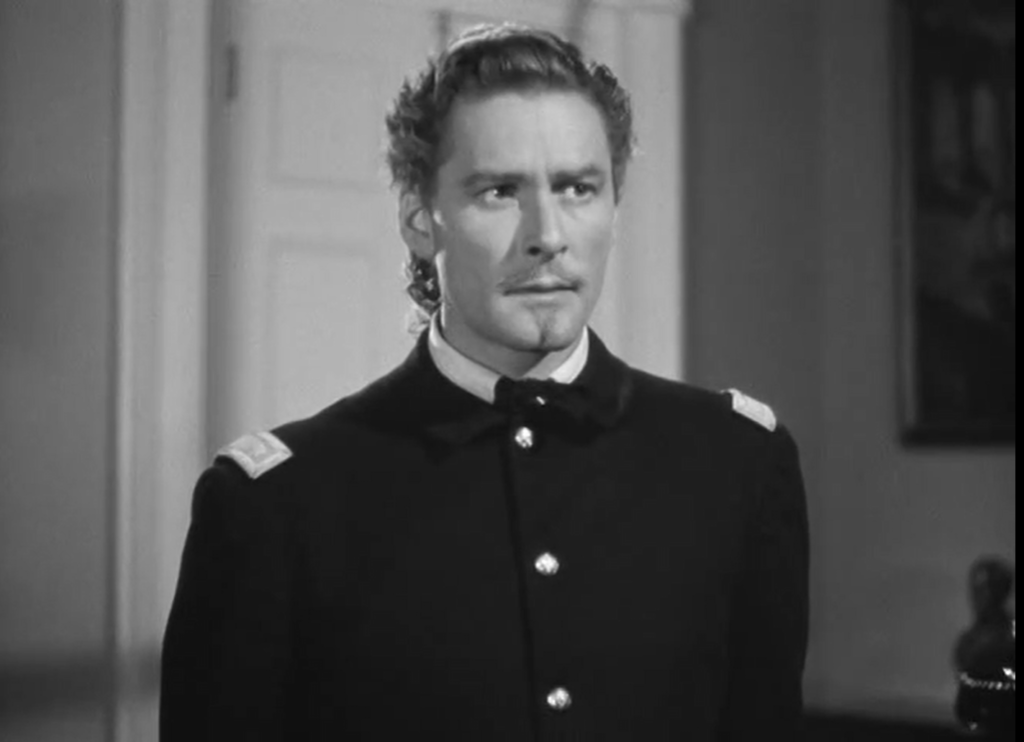
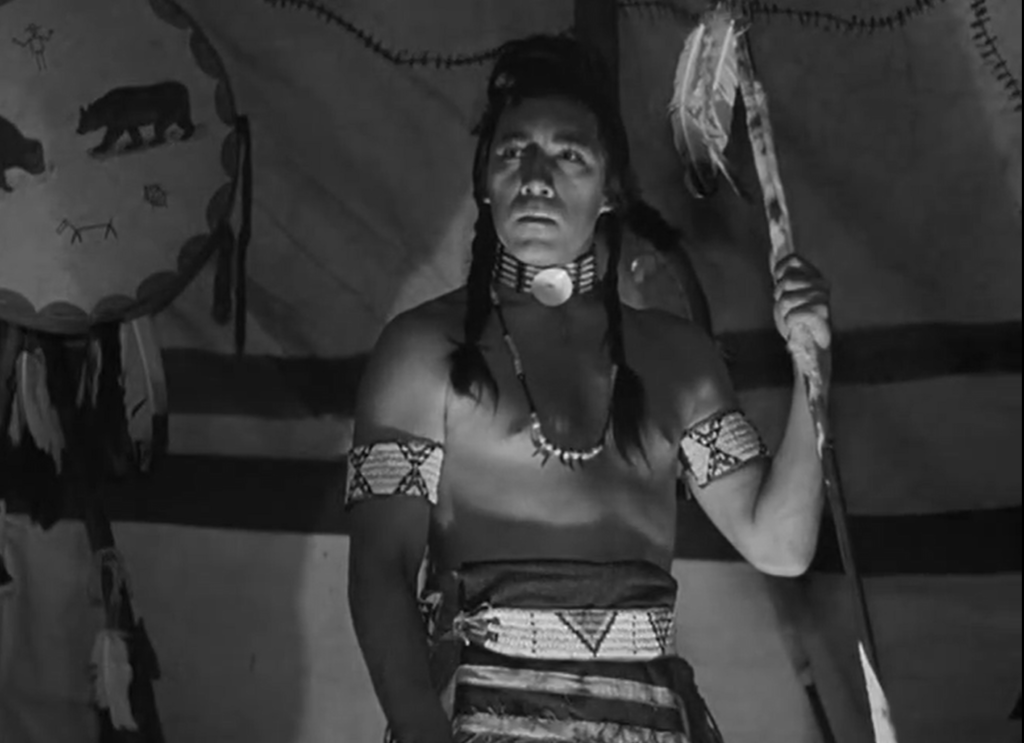
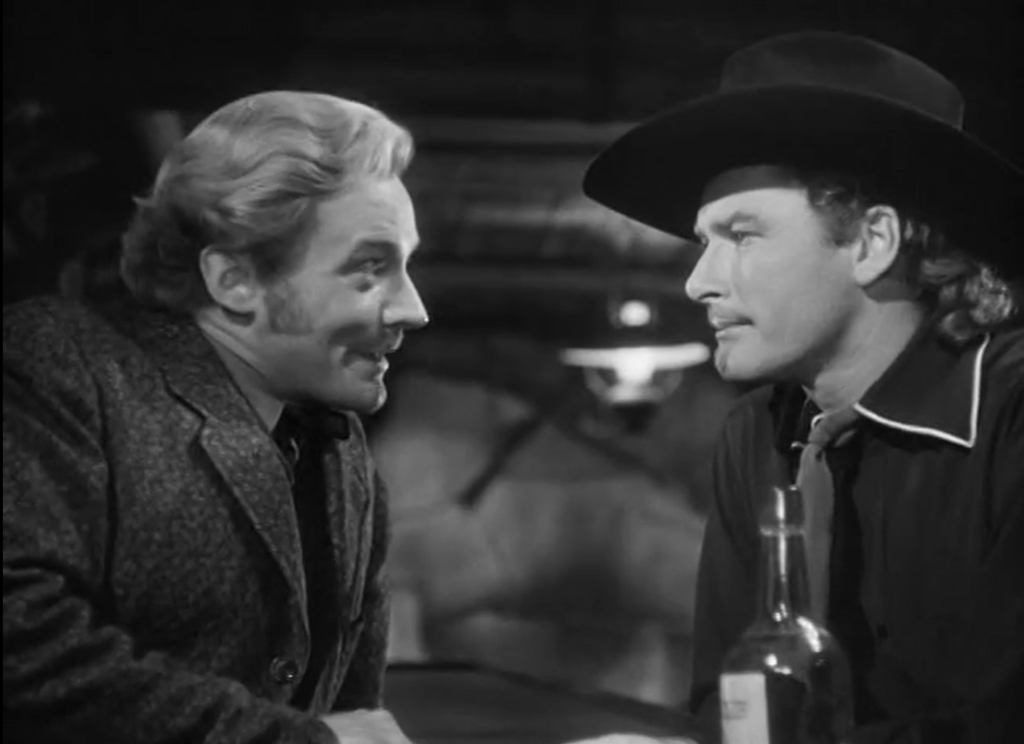


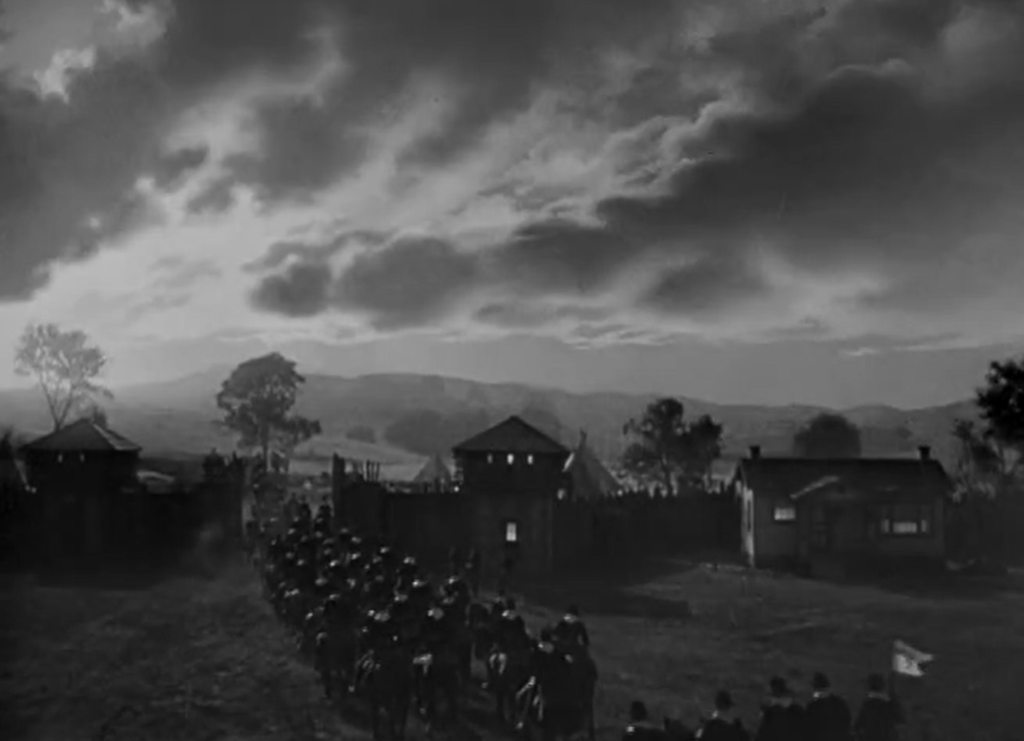
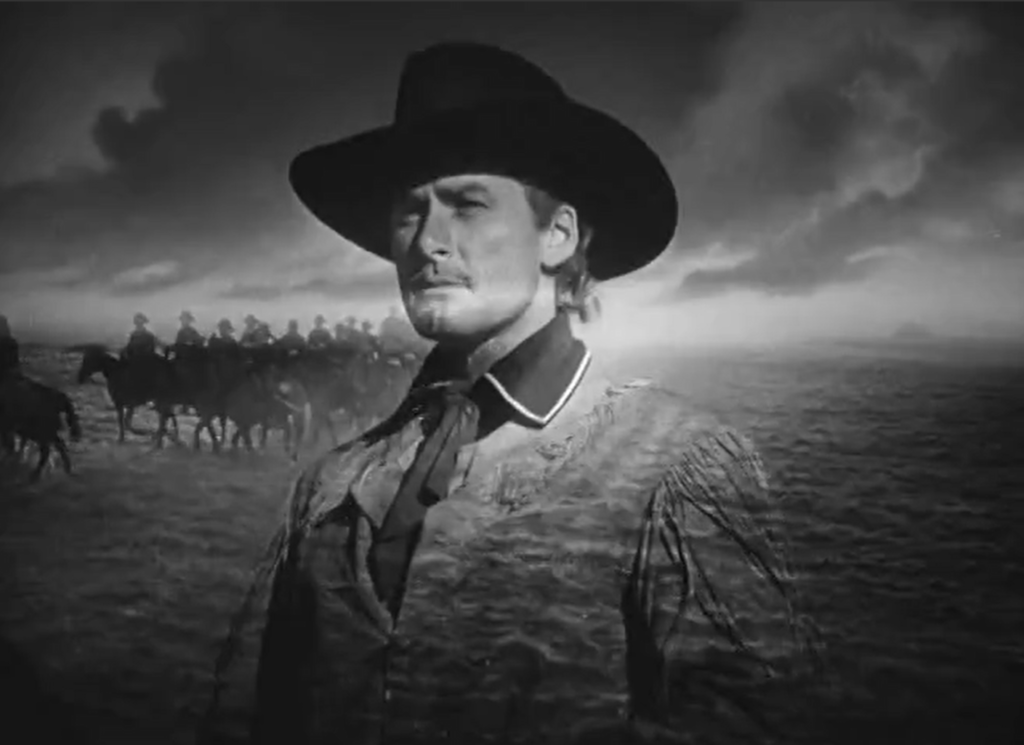
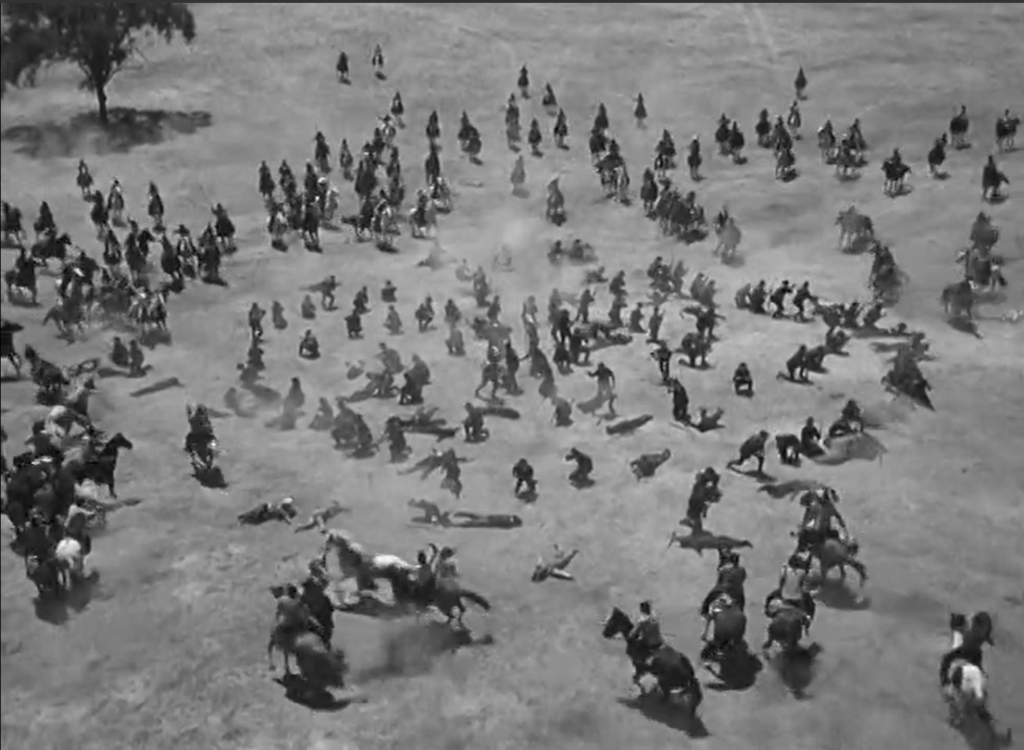
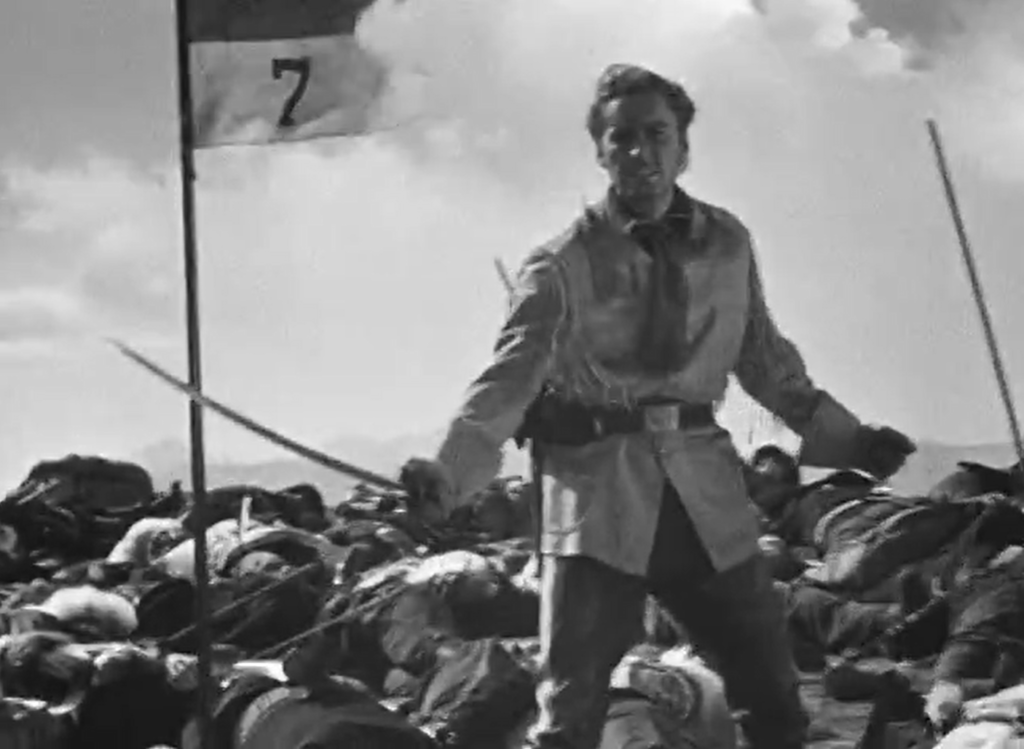
One thought on “They Died With Their Boots On (1941)”
First viewing. Not must-see.
I had always avoided this film, until now. At various points, in various places, I had read about how particularly inaccurate this film is. Since I had little interest in Custer anyway, it didn’t bother me to skip this film.
It’s one thing for a film to be slightly or somewhat inaccurate. It’s another for wild liberties to be taken. And, esp. with age, I have become less and less tolerant of stretched fictionalized accounts.
But, I did watch it – more or less as fiction. As fiction, it’s mildly engaging… when it isn’t tiresome.